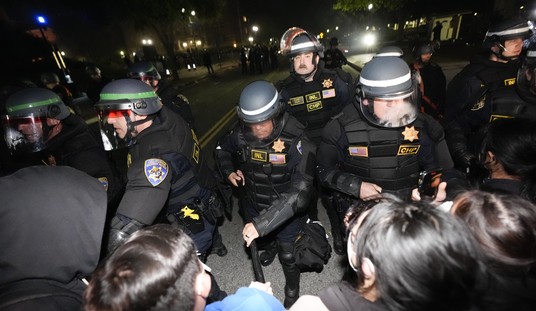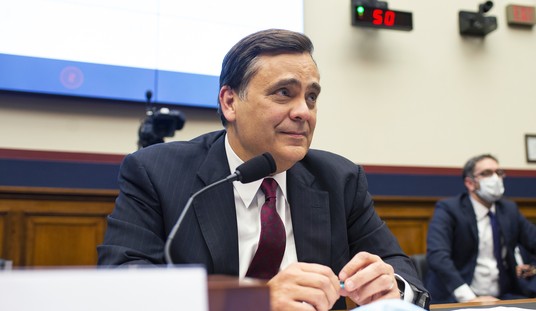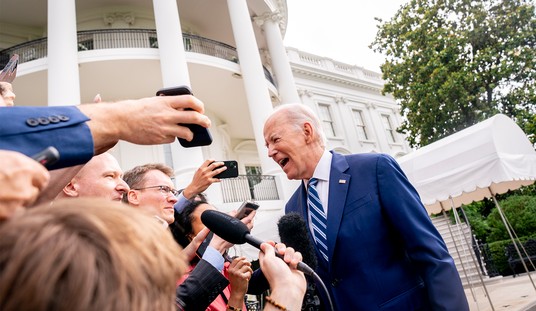On Monday night, President Obama pointedly refused to use the word “terrorism” in connection with the Boston Marathon bombings, but he got around to deploying it on Tuesday morning. “Any time bombs are used to target civilians, it is an act of terror,” the President declared.
Then why not call it an “act of terror” on Monday night? It was perfectly clear that bombs had been used to target civilians at the time of the President’s initial statement. I wasn’t overly troubled by his reluctance to say “terrorism” in the initial statement – it seemed odd, not outrageous, and we’re not going anywhere near Benghazi territory unless he deliberately attempts to obscure who the perpetrators were – but his stated reason for using it on Tuesday morning seems rather facile.
The use of bombs as a murder weapon clearly isn’t key to the definition of terrorism, or else any number of mob hits would have to be reclassified as terrorism. Also, when an organized team of killers used weapons other than bombs to murder civilians in Mumbai in 2008, it was clearly an act of terror. No one thought to classify the Newtown murders as an act of terrorism, and that probably wouldn’t have changed if the killer had used a bomb. Former LAPD officer Chris Dorner was often described as a “domestic terrorist” during his killing spree earlier this year, and he acted in accordance with a length political manifesto, but he had no supporting organization. The Fort Hood shooter, Major Nidal Hassan, did have connections to terror organizations, but the government classified his attack as an incident of “workplace violence” rather than terrorism. Floyd Corkins II attacked the Family Research Council headquarters in Washington explicitly because he didn’t like their politics, and planned to litter the site of his aborted killing spree with Chick-Fil-A sandwiches because he didn’t like their politics, and was duly classified as a domestic terrorist.
This is important because official use of the word “terrorism,” particularly by the President, immediately changes the legal and policy environment surrounding an attack. It seems reasonable to use the word with some care. The American public needs to know when it faces the true threat of terrorism, and our officials must be able to diagnose and combat it properly.
Government agencies are not in agreement about the technical definition of terrorism. The CIA uses the definition contained in Title 22 of U.S. Code: “premeditated, politically motivated violence perpetrated against noncombatant targets by subnational groups or clandestine agents.”
The FBI acknowledges there is “no single, universally accepted definition of terrorism,” but builds from the Code of Federal Regulations to arrive at this description of domestic terrorism: “The unlawful use, or threatened use, of force or violence by a group or individual based and operating entirely within the United States or Puerto Rico without foreign direction committed against persons or property to intimidate or coerce a government, the civilian population, or any segment thereof in furtherance of political or social objectives.”
Add the element of foreign direction, and you get the FBI’s working model of international terrorism, which “involves violent acts or acts dangerous to human life that are a violation of the criminal laws of the United States or any state, or that would be a criminal violation if committed within the jurisdiction of the United States or any state. These acts appear to be intended to intimidate or coerce a civilian population, influence the policy of a government by intimidation or coercion, or affect the conduct of a government by assassination or kidnapping. International terrorist acts occur outside the United States or transcend national boundaries in terms of the means by which they are accomplished, the persons they appear intended to coerce or intimidate, or the locale in which their perpetrators operate or seek asylum.”
The FBI’s more precise definitions are significantly different because they allow for the destruction of property, not just violence perpetrated against individuals, to be classified as terrorism, given the objective of either intimidation or coercion. Intimidation, in this context, might be seen as terror without a specific set of demands the targeted population is expected to comply with.
The Department of Homeland Security, in its founding document, defines terrorism as any activity involving an act that is “dangerous to human life or potentially destructive of critical infrastructure or key resources,” violates the criminal laws of the United States, and appears intended to “intimidate or coerce a civilian population, influence the policy of a government by intimidation or coercion, or affect the conduct of a government by mass destruction, assassination, or kidnapping.”
This really seems like an issue where every sector of the government should be on the same page, but of course even if they all accepted precisely the same legal definition of terrorism, its application would still be a political art. Homeland Security is already notorious for making broad declarations that various groups should be watched as suspected terrorists, or sponsoring studies that make such declarations. On the other hand, when a clearly premeditated bombing attack inflicts horrendous loss of life, different appendages of the government rouse themselves to speak of “terrorism” at different speeds.
I would suggest that the American people are most urgently concerned with the risk of continuing terrorist activity, and the severity of the immediate threat. Whatever their motivations or fevered political agendas, isolated murderers who wipe themselves out, or are swiftly taken into custody, can be diagnosed for signs of terrorism at length. A maniac who remains on the loose, or who acts in concert with a larger organization, should be designated as a “terrorist” more quickly and universally, so the appropriate resources can be brought to bear, and the public has a proper understanding of the threat it faces.














Join the conversation as a VIP Member